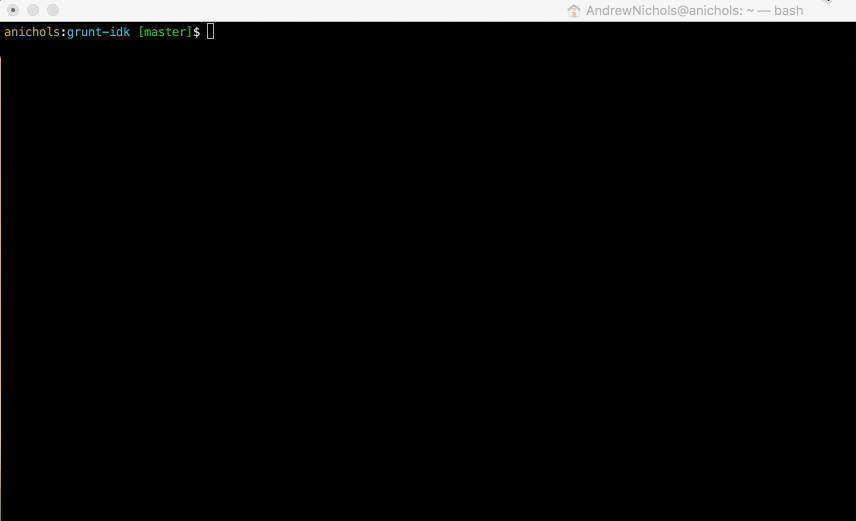grunt-idk
Interactive grunt help and task selection

Getting Started
If you haven't used Grunt before, be sure to check out the Getting Started guide, as it explains how to create a Gruntfile as well as install and use Grunt plugins. Once you're familiar with that process, you may install this plugin with this command:
npm install grunt-idk --save-devOnce the plugin has been installed, it may be enabled inside your Gruntfile with this line of JavaScript:
grunt;Alternatively, install task-master and let it manage this for you.
The "idk" task
Overview
Unlike most grunt plugins, you probably won't need to add a section to your config object for idk. idk is not a multi-task, and provides only two options (see below). So in many cases, you can just call .loadNpmTasks as defined above and be done.
The idk task provides an interactive prompt for selecting tasks and targets to run (because sometimes you just don't remember what you want to run). There are three stages to this:
First, you will be prompted to select tasks to run. Use up and down (or j and k) to navigate up and down and spacebar to select a task (or press a to select all or i to invert your current selection). When you've chosen your tasks, use Enter to confirm your selection.
Second, for each task you selected in the first prompt that is a multi-task, you will be prompted to select the targets for that task. Use the same controls as above to make your selections.
Finally, you will presented with your current selection and given a chance to reorder the tasks. In addition to the above controls use left or h to move a task higher in the run queue or right or l to move it lower in the queue.
N.B. The second step will be skipped for multi-tasks with only one target, and the third step will be skipped if there is only one task to run.
By default, 20 items will be shown at one time in the prompt. You can configure this by setting options.size in your grunt config. If options.size (whether default or specified) is greater than the size of the terminal window (as specified by process.env.LINES), the size will be process.env.LINES - options.offset where offset defaults to 5.
Note that LINES and COLUMNS may or may not be available depending on your set up (and I have no idea how Windows handles such things). For me, by default, I can do echo $LINES and echo $COLUMNS and get correct numbers, but they are not available in child processes. So I have export LINES=$LINES and export COLUMNS=$COLUMNS in my bashrc. You can try this as well, or just always set size and offset to numbers sufficiently small enough. I have no idea if inquirer attempts to handle lists that would be off the screen or not.
Example config
module { grunt; grunt; // You might want to register other aliases that you can remember, such as grunt; // and/or grunt; // and/or grunt;};Contributing
Please see the contribution guidelines.



